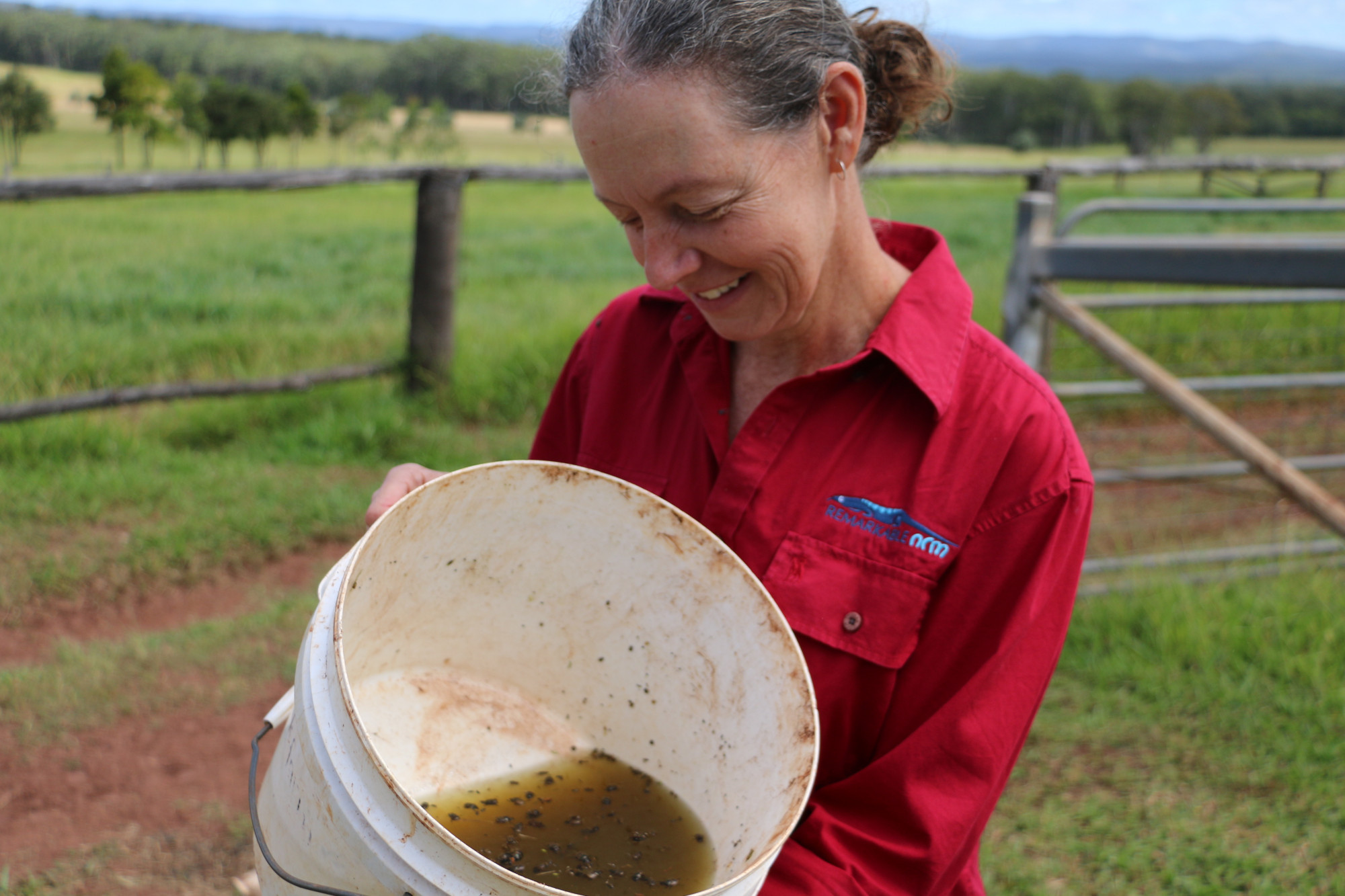Community & Business
12 March, 2021
Beetles may be silver bullet for Tableland soils
DISCOVERIES being made by local research group, “Dung Beetles on the Atherton Tablelands: Identification and Location” (DBID), could have huge benefits for the local beef and dairy industries.

BY SALLY TURLEY
DISCOVERIES being made by local research group, “Dung Beetles on the Atherton Tablelands: Identification and Location” (DBID), could have huge benefits for the local beef and dairy industries.
Established by Gail Abernathy of Wondecla and Louise Gavin of Remarkable NRM, nine months ago, with funding support from Cape York and Terrain NRM, the project aimed to expand local knowledge about the presence and activities of Dung Beetles on the Tablelands and their benefits to the ecosystem and production.
But nine months in, the results being found by this dedicated group, which includes 6 dairy and beef operations from Wondecla, to Upper Barron, Malanda and Yungaburra, have moved way beyond those initial parameters.
“Our investigations have highlighted a gap in Dung Beetles activity during the winter months. Of the 17 native and 14 introduced species of beetle we have identified so far, none of them are actively removing enough dung in the winter months, which is something we want to change,” Louise Gavin said.
“We have also discovered the presence of the introduced predatious species Hister nomas which feeds on fly larvae.
“The female lays her eggs under the cow pad and her larvae feed on fly larval in the pad, as well as finding and feeding on fly puparia in soil around the pad.
“Importantly, it was noted in the “Dung Beetle Survey of South East Queensland” which surveyed 18 properties throughout January 1999 that, when Dung Beetles are active enough, buffalo fly numbers reduced to levels where little or no chemical control was needed.
“A single cow pad can attract 2000 bush flies and CSIRO staff who had worked on the Dung Beetle buffalo fly program in Queensland, have stated that buffalo fly survival during experimental work had been reduced by 80% to 90% due to Dung Beetle activities.”
Ms Abernathy believed the Dung Beetles could be a silver bullet for farmers. “If they reduce flies we use less chemicals, which means less runoff to the reef. Australia's 250 native species evolved with our marsupials and are not adapted to clean up the larger, moister dung pads left by cattle,” she said.
“Removing dung from pastures and shifting those nutrients underground, fertilises and aerates the soil, which improves pasture quality and reduces erosion, as well as breaking the parasite cycle. It is a win/win situation that is good for the farmers, the cattle, the environment and the reef.”
Group members were required to collect four cow pad samples each month. The manure, must be at least 24 hours old, so it will have collected night and day flying species, and must include 5cm of the soil underneath, where eggs and larvae may be present.
Using the flotation technique, each pad is then tipped into 10 litres of water and agitated to remove the bugs. The collected bugs are then sent to leading Dung Beetle expert, Dr Bernard Doube in South Australia.
Ms Gavin said the project was hugely indebted to the Director of ‘Dung Beetle Solutions International,’ Dr Doube, for his subsidised rates, the generous sharing of his vast knowledge and his genuine desire for their project to succeed.
She said they hoped to continue building on the work done in former trials including the $23 million Dung Beetle Ecosystem Engineers (DBEE) 5 year project based in south west Queensland in 2019 and the Malanda Beef Plan Group Dung Beetle Project 2014-2016.
The DBEE project introduced new Dung Beetle species to southern Australia, created a beetle identification and location app, and aims to develop a Dung Beetle supply and distribution pipeline to producers.
In 2014 the Malanda group invited commercial Dung Beetle supplier, John Feehan (Soil Cam Pty Ltd) to present at one of their farm field days and subsequently obtained a $65,000 grant through land care group, Terrain to purchase a number of dung beetle colonies.
These were distributed across 18 Tableland properties from January to May 2016. Unfortunately no baseline beetle species identification studies were carried out prior to their release making it impossible to know if the species had already existed on farms before hand.
A lot of baseline data has been collected in the current project, including which species and in what numbers are already present on farms, their movements and activities throughout the year as well as a record of chemicals being used in each location.
Keen to continue this important work, Louise and Gail have applied for further funding and hope to both extend the trial out another 12 months and involve more properties, learn how far the beetles travel and introduce more beetles and different species to the area.
“We didn't know any of the species or when they were active when we started. We would like to test our knowledge further by looking at how the beetles are affected by our temperature range, chemical use, seasonal factors and predators such as birds and cane toads,” Ms Gavin explained.
Ultimately the group hope to establish breeding trials locally to increase the numbers of species suited to the area. At over $1/head to buy, they would be a great resource to produce and with two thirds of the cattle herd in northern Australia, there would be a ready market for them.
And quipped Ms Abernathy, they are quiet to have around, easy to muster and cheap to feed – the farmers' perfect accessory.


